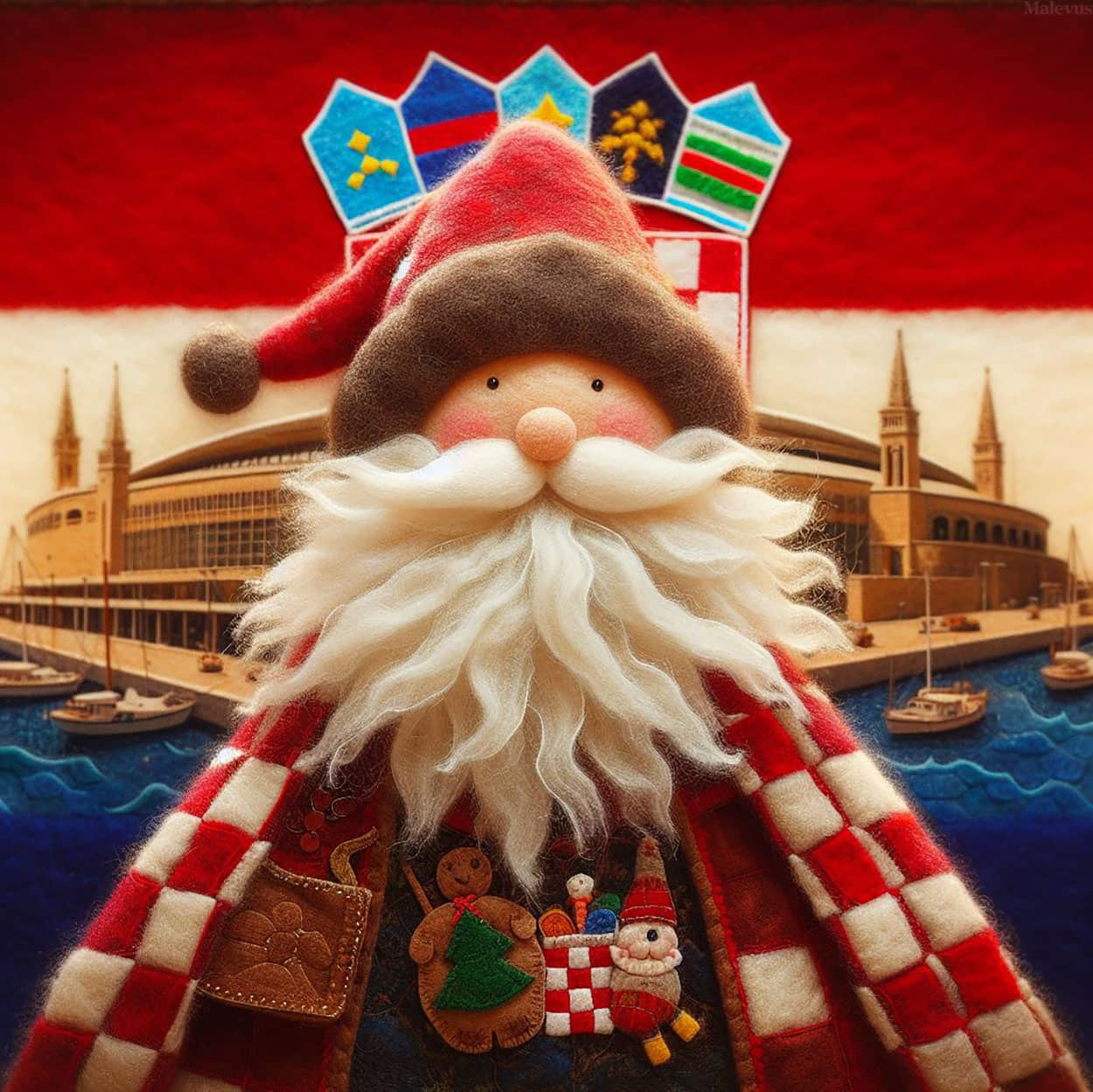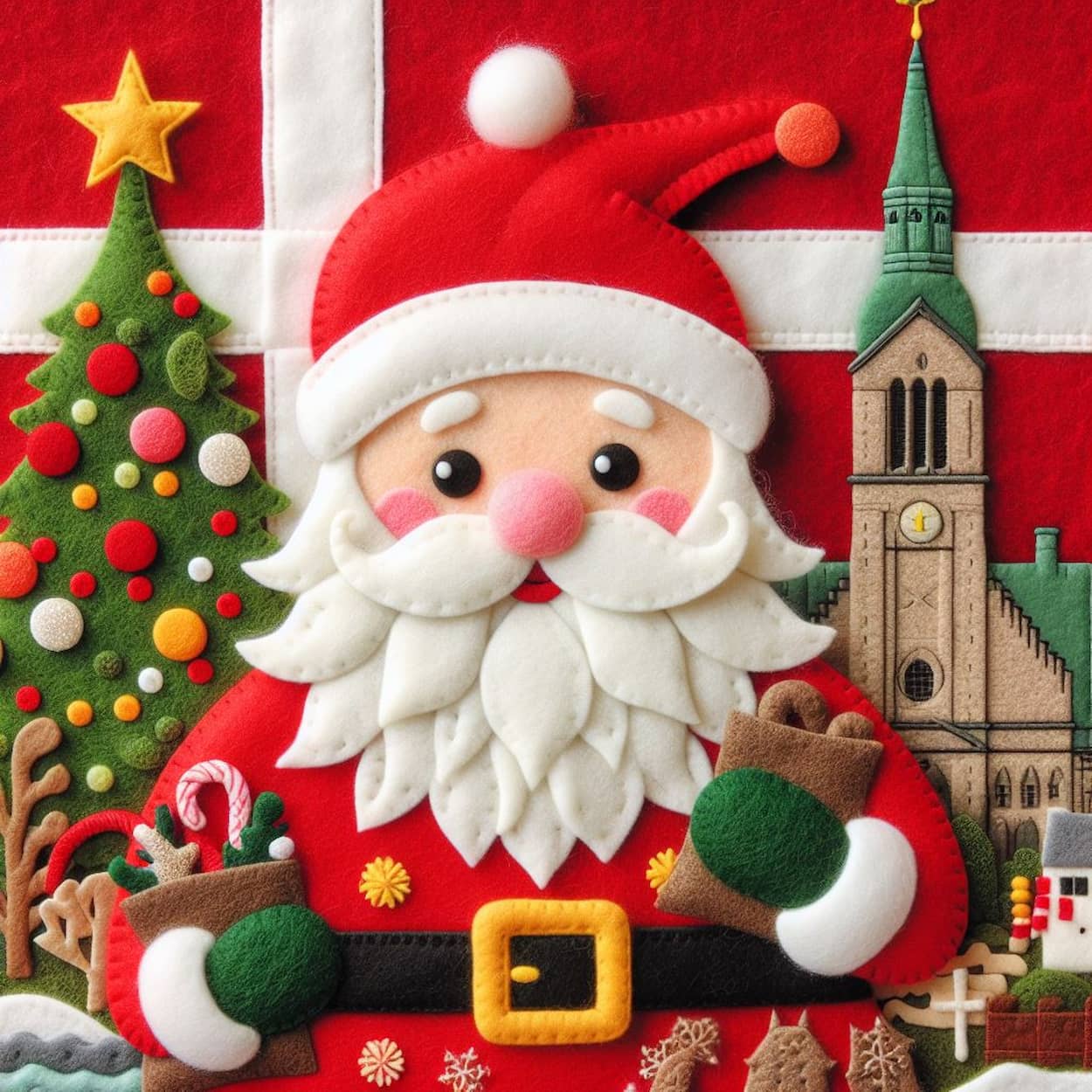Historically, Scots would observe Christmas (sometimes called “Yule” or “Nollaig”) in the same way as Catholic Europe did. Festive days and other church holidays were outlawed as a result of the Reformation’s shift of perspective on traditional Christian feasting days, such as Christmas. Regardless, Scotland officially recognized Christmas Day as a public holiday in 1958, but Boxing Day was only added to the list in 1974. Cozy lodgings, festive events, winter activities, and scenic outdoor attractions make a winter visit to Scotland a somewhat less ordinary experience. Scotland has a variety of attractions, including the Northern Lights, the night sky, the Hogmanay Street Festival, and the Scottish Highlands.
Christmas Traditions in Scotland
Presented below are a few distinctive Scottish Christmas customs:
First Footing
Firstly, it is a long-established custom in Scotland to visit loved ones and acquaintances after the bells ring in order to bring them coal, whiskey, or black bun, which is a token of good stead. This belief, which has its origins in the 8th and 9th centuries with the Viking invasions, states that whoever steps foot into a house first, known as the “first foot,” will either bring good fortune or bad luck for the next year. As a symbol of good fortune, a tall, dark-haired man is seen as the first footer in Scottish traditions.
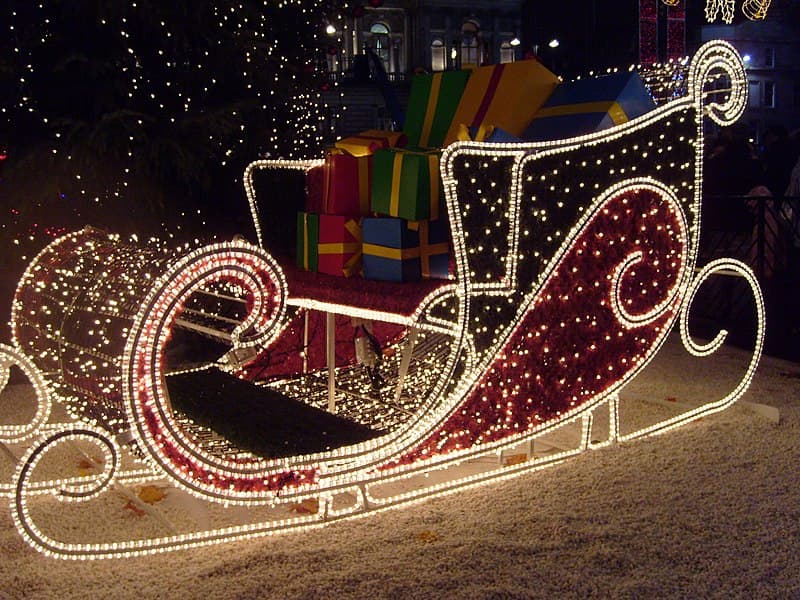
Singing of Auld Lang Syne
One of the well-known Hogmanay traditions is the singing of Robert Burns’s “Auld Lang Syne,” a song in which participants join arms and sing in harmony. By the middle of the 20th century, this had grown in popularity in Scotland.
Neolithic Solstice Celebrations
Celtic Pagans would commemorate the shortest day of the year with festivities observed during the winter solstice, which typically occurred around December 21 or 22. Part of the purpose of the celebrations was to cheer up the gods and get them to let the sun come out again after a long, gloomy winter.
Yule Logs
There was a time when Yule logs weren’t made of chocolate. An old Celtic Druid ritual with strong ties to the northern port towns of Scotland is its spiritual ancestor. During the 12 days of midwinter, the Druids would burn an oak log continually to protect themselves from darkness and restore power to the Sun, since they thought that the Sun would stand still during this period. The last piece of wood would be salvaged to start the fire the next year, when it had almost burned down entirely.
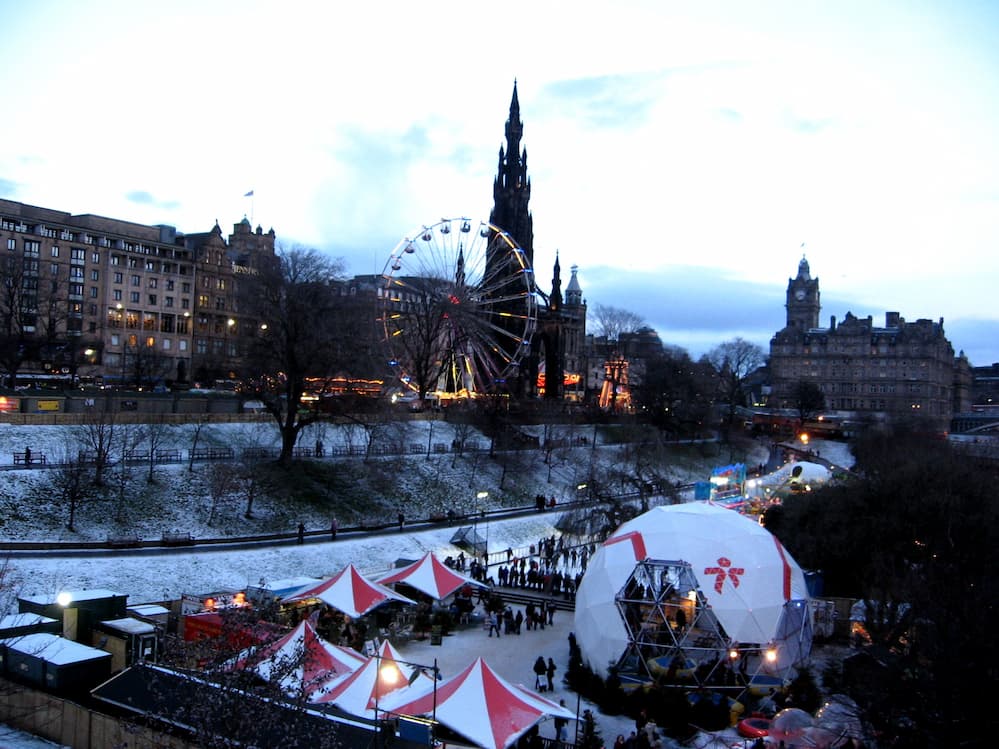
Scotland’s Krampus
Although the European Christmas mischief maker Krampus has a Scottish counterpart, Scotland has a long history of having its own version of the character. The children of Islay, an island in the Hebrides, were told that “Crom Dubh na Nollaig,” meaning “the dark crooked one of Christmas,” may pay them a visit if they were mischievous in the days leading up to Christmas. The wind roaring down the chimneys was believed by children to be Krampus’s howls.
Places to Celebrate Christmas in Scotland
These locations in Scotland provide festive experiences, ranging from traditional Christmas markets to natural beauties:
- Edinburgh: During the Christmas season, the ancient city of Edinburgh takes on a tranquil ambiance. The streets are decorated with festive lights, and the city hosts Christmas markets. Guests have the option to participate in holiday activities, explore the cityscape, and take guided tours of renowned castles and the Scottish Highlands. There are carnival rides and ice skating on George Street.
- Glasgow: Glasgow’s WinterFest, with its festive stalls, holiday drinks, and silent disco, provides a holiday atmosphere. It’s a place for Christmas shopping and soaking up the holiday spirit. Glasgow’s Riverside Museum is located at Pointhouse Quay in the Glasgow Harbour regeneration district.
- Aberdeen: Experience a serene Christmas at Aberdeen’s Winter Festival and Christmas Village, featuring an outdoor ice rink, a fairground, and local food and beverages. Visit Aberdeen Art Gallery for Christmas choir performances; visit Santa at Grampian Transport Museum; or visit the Beach Ballroom.
- Perth: The Perth Winter Festival is a spot to visit during the Christmas season, offering a range of events such as street performers, magicians, and Santa runs.
- Aviemore: During Christmas, Aviemore is surrounded by the Cairngorms National Park, the largest national park in the United Kingdom. For snowsports enthusiasts, the nearby Cairngorm Mountain outshines other destinations with its on-site ski lifts and equipment rental.
- Isle of Arran: The Isle of Arran is a retreat for nature enthusiasts and a location to spend Christmas, with its peaceful countryside and landscapes.
Most Traditional Christmas Scottish Foods
Among the most traditional and beloved Scottish Christmas meals are:
- Cock-a-Leekie Soup: Traditional Cock-a-Leekie Soup is prepared with chicken stock, leeks, and sometimes rice or barley.
- Haggis: Haggis, while not usually served during Christmas, is actually a staple of Scottish cuisine and a popular dish among Scots (see Haggis Animal: A Mythical Creature of Scottish Cuisine).
- Clootie Dumpling: Scottish desserts like Clootie Dumpling are a kind of fruit pudding that is cooked in water with flour, breadcrumbs, dried fruit, suet, sugar, and spices. The dish is then wrapped in a cloth for transport.
- Shortbread: Shortbread is a traditional Christmas cookie made using traditional Scottish ingredients.
- Dundee Cake: It is a traditional Scottish fruit cake and is a Christmas staple.
- Mince Pies: It is a traditional Christmas dessert in Scotland, which are small sweet pies filled with a blend of spices and dried fruits.
- Scotch Trifle: Often called Tipsy Laird, it is made with layers of fruit, custard, whipped cream, and sponge. It is seasoned with whiskey or sherry.
Christmas Decorations in Scotland
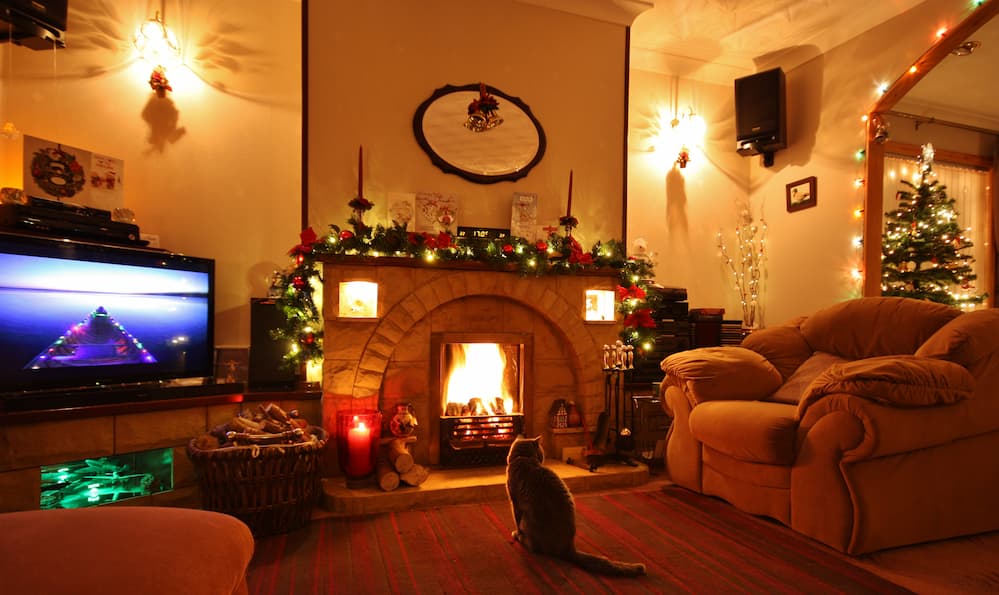
Traditional Scottish characteristics are often used in Christmas decorations in Scotland.
Scottish-Themed Christmas Tree
An easy way to enjoy a Scottish Christmas is to decorate your tree with ornaments and decorations that are Scottish in theme. There are some well-liked Scottish decorations:
- A Heilan coo (Highland cow)
- Scottish thistle
- Crochet Heilan coo
- Scottie dog
- Gingerbread Scotsman playing the bagpipes
Tartan Decorations
Linked with Scotland, tartan is a pattern made up of multi-colored bands that run horizontally and vertically. Tartan ornaments are available throughout Christmas.
Use lengthy strands of tartan ribbon or make your own tartan bows to decorate your Christmas tree.
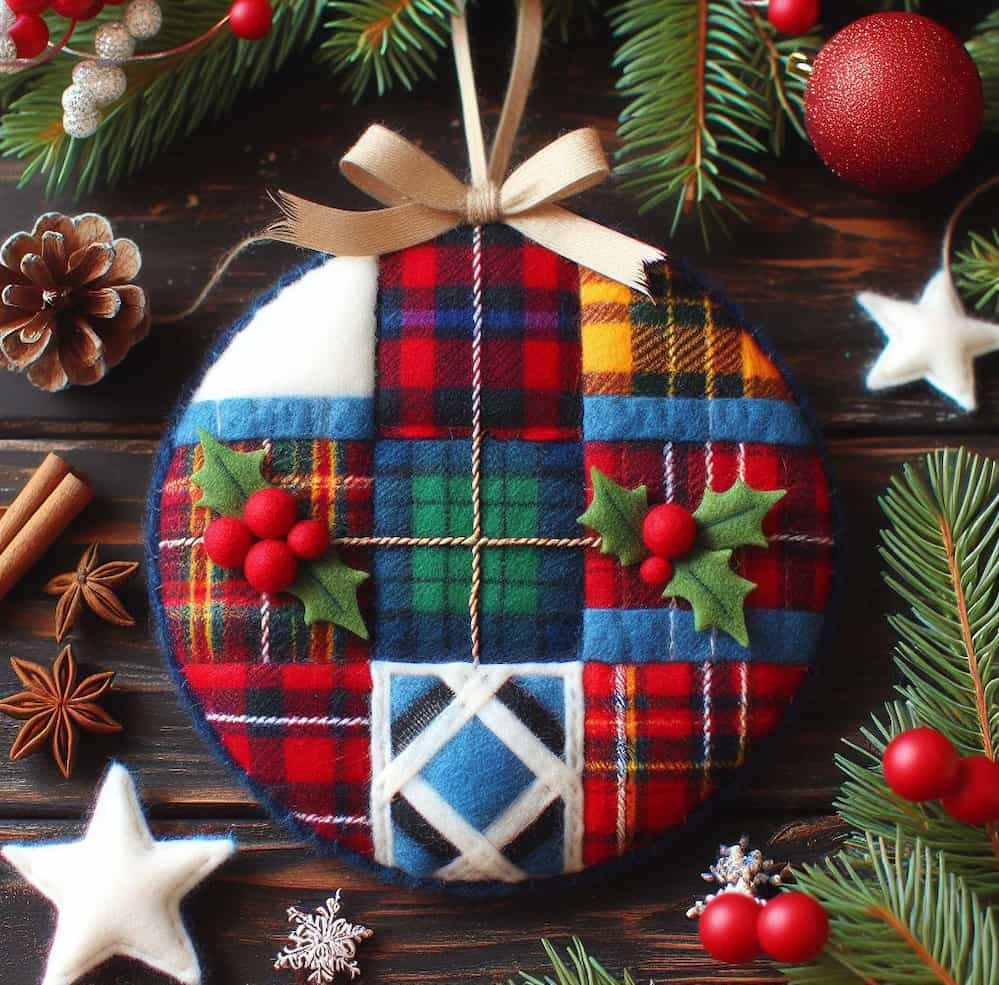
Paper Crafts and Flags
Scots commonly use paper crafts and flags as Christmas decorations. Traditional Scottish garden resources, such as pinecones and twigs, are used to create such paper crafts as Christmas tree decorations.
Red Decorations
Scots often like to add splashes of crimson to both interior and exterior design elements. For a more festive feel during the Christmas season, many Scots opt for red décor. In keeping with the country’s historic patterns, tartan and plaid designs—which often include red—are also commonplace in Scottish Christmas decorations. Garlands and wreaths also use red berries.
Yule Bread
The islands of Shetland and Orkney are the birthplace of the traditional Christmas bread known as Yule bread. A three-thread loaf of caraway seed bread is shaped into a sun symbol by being flipped upside down. There is a pagan undercurrent to the practice because of the folkloric association of caraway seeds with Scotland.
It is customary for the baker to conceal a little object inside the loaf of bread, and the one who discovers it will be bestowed with a year of prosperity (see also: King Cake). Scotland outlawed yule bread for a long time, but it’s now a beloved holiday staple.
History of Christmas in Scotland
The many cultural and religious traditions that make up Scotland have had a profound impact on Christmas celebrations over the years. Before the Reformation in 1560, Christmas in Scotland followed the same pattern as the rest of Catholic Europe. At that time, the holiday was known as “Yule” or “Nollaig” in Gaelic-speaking regions. An earlier recognition of the Winter Solstice—the shortest day of the year—was the source of the Yule festival (others called it Koliada).
Suppression in the Era Following the Reformation
The Reformation changed people’s thinking about old Christian feast days like Christmas, which ultimately led to their elimination. In 1640, the Scottish Parliament passed an act outlawing the “Yule vacation and all observation thereof in time coming.” Singing a Christmas song was already a major offense.
Impact of the Vikings
In the late seventh century AD, the Vikings started attacking Scotland. They eventually made their home there, and they brought with them a pagan festival they called Jól (now called Yule in Scotland) to celebrate the Winter Solstice. It is said that during the darkest season of the year, Yule was celebrated for at least twelve days as a means of remembering ancestors.
Celebrations in the Modern Era
Scotland did not officially recognize Christmas Day as a public holiday until 1958, far into the twentieth century. Hogmanay, the Scottish New Year’s Eve celebration, was the biggest party of the year.
Midwinter celebrations, including gift-giving, official holidays, and feasting, typically took place between December 11 and January 6. Today, Hogmanay (or New Year’s Eve) is still the biggest event of the year.



